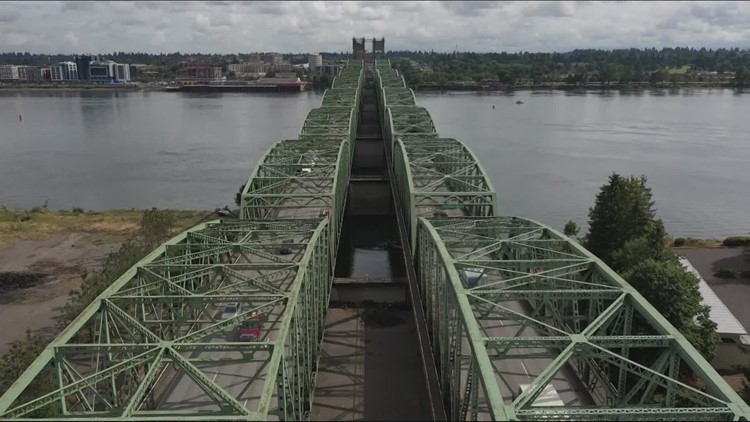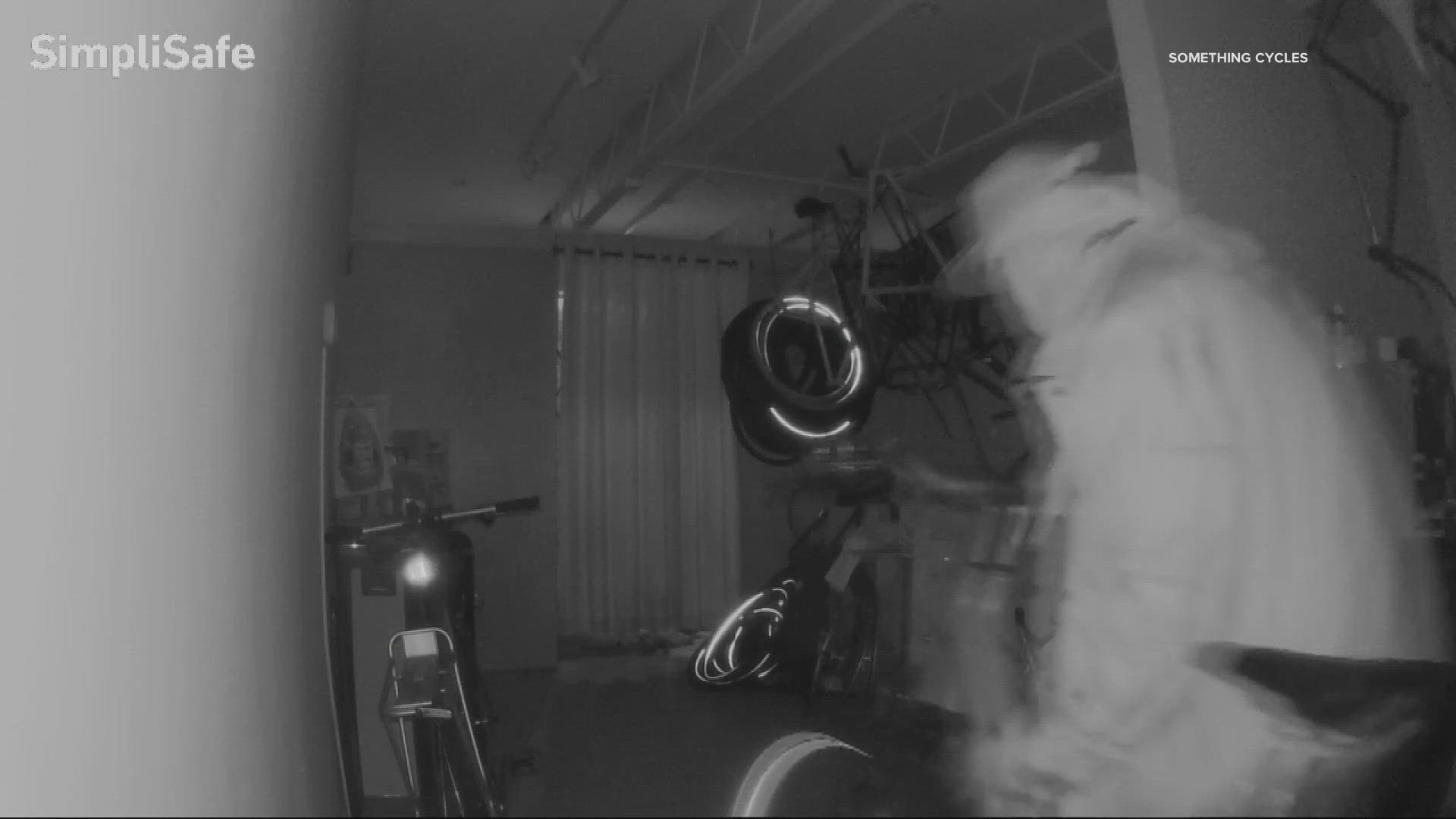PORTLAND, Ore. — The Interstate Bridge Replacement (IBR) program team unveiled the last of their recommendations for the configuration of the proposed new bridge on Thursday. The most notable choice was the recommendation of just one set of auxiliary lanes, for an overall width of eight traffic lanes.
That's a reduction from the ten-lane design that had been chosen for the program's predecessor, the failed Columbia River Crossing (CRC) project; the three existing travel lanes plus two auxiliary lanes on each side.
Community opinion polls conducted by the IBR program found that 85% of respondents supported one set of auxiliary lanes and 74% supported two sets. Clark County residents were more likely to prefer two sets rather than one, while Oregon residents were more evenly split.
"We took in a lot of feedback, looked at the overall impacts, and focused with centering on climate and equity, and landing on the one auxiliary lane," program manager John Willis said at a Thursday morning meeting of the project's Executive Steering Group.
The eight-lane design is paired with a scaled-back interchange at Hayden Island. The CRC plan would have maintained the island's current full interchange, which allows traffic to enter and exit the freeway in both directions.
The IBR recommendation calls for maintaining only a southbound exit ramp and a northbound entrance ramp. Drivers traveling between Portland and the island would instead use the Marine Drive interchange on the Oregon mainland and cross on a separate arterial bridge.
That recommendation was based on a desire to minimize the impact of the freeway on Hayden Island residents, Willis said, coupled with community polls indicating that Washington residents drive to Hayden Island more often than Oregon residents.
Most of the other high-level configuration recommendations were already known. The project team revealed last month that it would recommend including light rail on the bridge, rather than bus rapid transit, although Willis's presentation did raise the possibility of Bus on Shoulder on the new bridge, which C-Tran already uses on Interstate 5 south approaching the bridge.
In another reduction in scale from the CRC plan, the team recommended that the light rail line remain adjacent to I-5 in Vancouver and terminate near Evergreen Boulevard, rather than branching off through the city's downtown streets and terminating at Clark College.
Light rail was one of the most controversial parts of the CRC, particularly in Washington, but Willis said IBR's community opinion polls found strong support for light rail among residents on both sides of the river: 90% in Portland, 69% in Vancouver and 57% in Clark County excluding Vancouver.
There is one place where the IBR project is going bigger: The team is recommending a full replacement of the North Portland Harbor Bridge, which carries I-5 from the Oregon mainland to Hayden Island. The CRC plan called for the existing bridge to be retrofitted and maintained.
The IBR team also recommended that the project include variable-rate tolling, which the CRC also would have featured, although it's too soon to know what the toll amounts would be.
One detail that still hasn't been resolved is the configuration of the bridge itself. The team previously outlined two options: twin bridges that would each carry one direction of the freeway, or a single bridge that would stack the freeway on two decks. The team is still evaluating those two options, program administrator Greg Johnson said, but there's still time to make a decision later.
Taken together, the various design recommendations form the Locally Preferred Alternative (LPA), which is the single conceptual design that the project team will put through the federal environmental review process.
The LPA is not a full engineering design — in fact it's only a 2% design, Willis said. Assuming the LPA receives federal approval, the detailed design work is scheduled to take place over the next few years, with construction targeted to begin in 2025.
In the shorter term, the project team will be seeking local approval of the LPA choices. Thursday's presentation was at a meeting of the project's Executive Steering Group, which includes representatives from local governments like the City of Portland and transit agencies like TriMet.
Those representatives will now be tasked with taking the LPA back to their respective boards and councils for review. The IBR team is also meeting Friday morning to present the LPA to the bi-state legislative committee that oversees the program.



